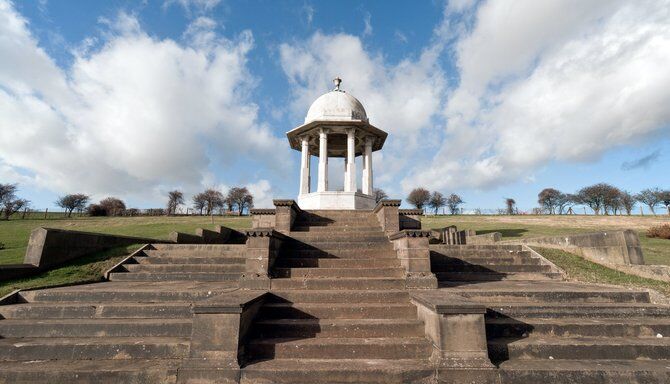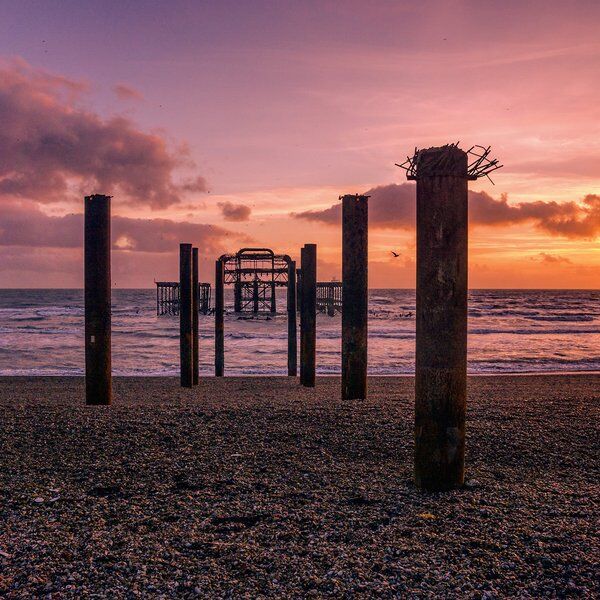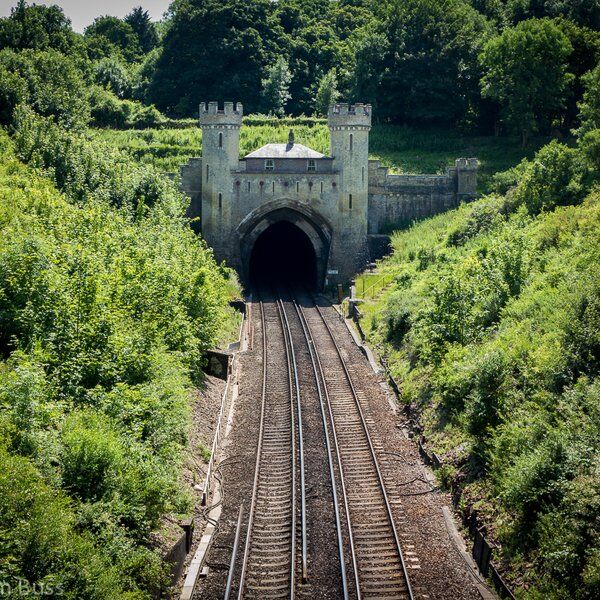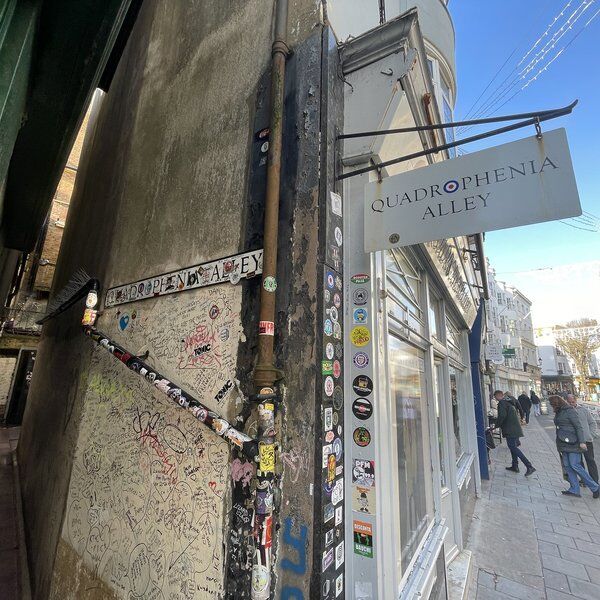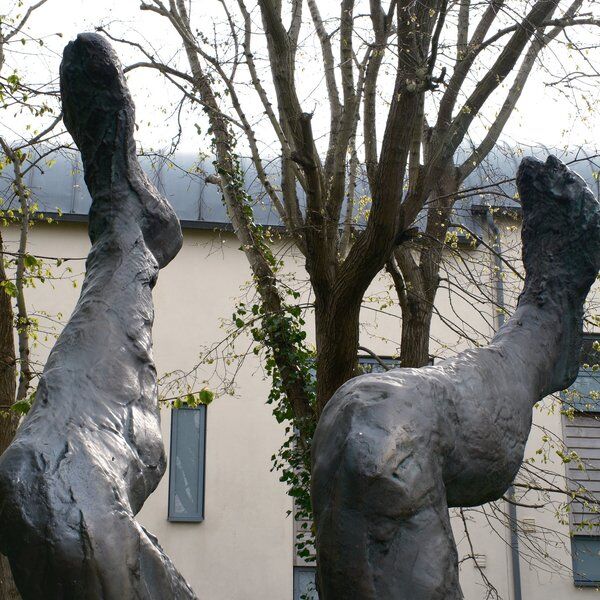The Chattri Memorial in Brighton
"The Chattri symbolises and reminds us of the contribution made by combatants and non-combatants from the South Asian community to the freedom and prosperity of Britain during the First World War.”
The Chattri Memorial, situated atop the Downs near Patcham, is a tribute to 53 valiant soldiers of the Indian Army who met their end during the First World War. Accessible only by a footpath, this white domed structure, designated as a Grade II listed building, marks the site where these soldiers were cremated.
Over the years, the Chattri Memorial has become a focal point for commemoration and remembrance. An annual Remembrance service, organised by the Chattri Memorial Group with support from the Royal British Legion, takes place to honour the Indian Army's service.

“The Chattri also offers an example of the bravery of South Asian men who lost their lives willingly in foreign lands fighting a war of not their [own making]. This contribution was repeated during the Second World War and one could argue that because of the original contribution, people from the South Asian community are continuing to make significant contributions to modern day Britain as citizens of this country today.”
Today, the Chattri Memorial continues to stand as a symbol of respect and gratitude, reminding visitors of the sacrifices made by those who fought a century ago.
The History of the Chattri Memorial
“The story of this rich seam of history, until recently, has been barely acknowledged by British historians, educators, writers and politicians. Arguably it has been ignored in the teaching of British history, particularly within the context of studying the British Empire and colonialism. It’s vital, in my view, for people from South Asian backgrounds to understand this period and the crucial role their ancestors played in the conflict and beyond. Ironically, it’s a perfect counter to xenophobia and racism. “
The history behind the Chattri Memorial is one of service and reverence. During the war, Brighton became a hub for Indian Army medical care, with sites like the Royal Pavilion, the Dome, and the York Place School serving as hospitals.
During their service on the Western Front between 1914 and 1918, around 12,000 Hindu and Sikh soldiers received treatment at these make-shift hospitals. But sadly, many succumbed to their wounds or illnesses. Cremated according to their religious customs at Patcham Down Ghat, their ashes were scattered in the English Channel.
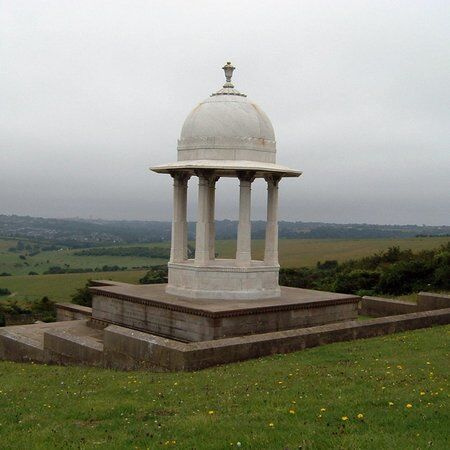
“To the memory of all the Indian soldiers who gave their lives in the service of their King-Emperor this monument, erected on the site where the Hindus and Sikhs who died in hospital at Brighton passed through the fire, is in grateful admiration and brotherly affection dedicated.”
Originally, many of these soldiers were commemorated on the Neuve-Chapelle Memorial in France, dedicated to the memory of 4,700 Indian Army soldiers without known graves on the Western Front. Additionally, fourteen soldiers found commemoration on the Hollybrook Memorial in Hampshire, primarily designated for those lost at sea.
In 2009, the Commonwealth War Graves Commission recognised the significance of commemorating these soldiers where they were cremated. Consequently, the commission designed and erected the Cremation Memorial adjacent to the Chattri Memorial, both situated on land owned by the Brighton and Hove City Council. And both honouring the fallen soldiers.

The Chattri Memorial’s Design
Nestled within a tranquil two-acre garden, the Chattri Memorial, designed by architect E.C. Henriques, and unveiled in 1921 by the Prince of Wales, offers a serene sanctuary for contemplation and reflection. At a towering height of 29 feet, the dome-shaped memorial was constructed on the site of the cremation pyre.
Crafted from exquisite white Sicilian marble under the careful supervision of Sir Samuel Jacob, the Chattri is an impressive octagonal shape, with 8 pillars that transition from square to octagonal as they rise. The Chattri's white marble body rests upon a plinth of grey stone, supported by three granite blocks covering the original cremation slabs. The 8 pillars stretch up 29ft from this plinth, creating a striking silhouette atop the South Downs.
The meticulous attention to detail is evident in every aspect of the memorial's design. Intricate ornamentation adorns the keystone finial and delicately incised bands of decoration, showcasing a fusion of Indian influences and Western architectural elements.
Remembering those Represented at the Chattri Memorial
For generations, the Chattri Memorial has served as a place of remembrance and reflection, attracting visitors from near and far to pay their respects to the fallen soldiers. Each second Sunday of June, the Sikh Pioneers and Sikh Light Infantry Association UK lay wreaths to honour their fallen comrades as part of the annual Chattri Remembrance service.
Davinder Singh Dhillon typically leads the service, with support from Tom Donovan. Distinguished guests, including members of the Armed Forces, local dignitaries, and community representatives, participate in the event. The ceremony commences with an Ardaas, a Sikh prayer led by a Giani ji, seeking the well-being of humanity irrespective of religious affiliations. Additionally, a Hindu priest offers prayers.
Political figures, such as the HM Lord Lieutenant of East Sussex and the Deputy High Commissioner of India, lay wreaths alongside representatives from various organisations and Sikh communities from different Gurdwaras. Descendants of those cremated at the Chattri, like Jaimal Singh Johal, honour their ancestors with wreaths.
The Last Post echoes through the Downs, followed by a solemn two-minute silence. Attendees are then invited to a local school for a meal, courtesy of the Punjab Restaurant in Covent Garden, London.

Visiting the Chattri Memorial
Located just a short drive from Brighton, the Chattri Memorial is easily accessible by car or public transport. However, it is then only accessible via a secluded path off a bridleway between the A27 Brighton Bypass and Clayton Windmills.
Explore Brighton with CityDays
The best way to discover more hidden gems around Brighton is to take your time and, ideally, have a pre-planned route that takes you past all the noteworthy nooks and hidden gems.
We can help you there!
We have two brand-new trails that combine the fun of an outdoor treasure hunt with the historical facts and whimsical trivia of a walking tour.
Answer riddles, solve puzzles and learn more about Brighton's history in a new and interactive way!
Take the stress out of planning your visit to Brighton and book your adventure today!
Not visiting Brighton this time? Don’t worry, you’ll find us all over the world.
